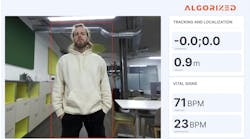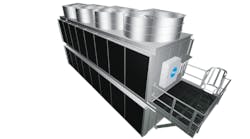According to the EPA, manufacturers in the U.S. generate 7.6 billion tons of waste every year. Sustainability has become a buzzword in almost every industry, but it doesn’t have to be that way. While developing systems to manage the wide range and high volume of waste materials can be challenging, there are some simple steps to consider to streamline operations, increase diversion from landfills, and control costs.
Inspect the amount and types of materials the facility generates
Businesses in the manufacturing space generate a high volume and a wide range of waste and recycling materials. From assembly floors to office spaces and spent materials, manufacturing facilities can generate waste volumes like that of a small town. To create a more informed waste management plan and to better develop clear objectives, it’s important to first study and understand the trends of waste generation in the facility.
First, facilities should determine which areas produce the most waste. For example, some locations may find that the bulk of materials are generated in the packaging area, while others may find that assembly lines are the main source.
When completing this task, it’s also important to look at the types of materials that are being generated. For example, scrap metal is one of the most common byproducts in factories including steel, aluminum, brass, iron, and copper. Processing these materials for recycling can be complex and manufacturers need to develop a proper strategy for containing and recycling them to generate reimbursement value. Other common materials include cardboard, wood, plastic, and paper products.
After the materials have been assessed within the facility, managers may consider a partner to help them determine the most effective recycling strategy. Partners can also help organizations find uses for scrap that might not be obvious.
A refreshed approach
Many of us are familiar with a single-stream approach to recycling, where all materials are mixed in one dumpster. However, while this approach increases the number of materials, the quality is severely affected. Single-stream recycling leads to lots of contamination, which causes 25% to be rerouted to the landfill.
Manufacturing organizations should employ the clean-stream method and collect and separate materials by stream. This process emphasizes retaining a material’s end value and significantly reduces contamination.
The process is also infinitely customizable and can ensure organizations are accurately disposing of the main materials identified in the facility’s waste audit.
Get employees on board
Employee participation is essential and can make the recycling process more productive and effective. Facility managers should send communication at the start of the program to define recycling. This allows employees to have as much understanding of the process as possible. The communication should also explain the business’ unique recycling plan to ensure materials are recycled correctly.
Part of getting employees on board should also include an education component on what can be recycled and the best practices for doing so. Organizations should make it as easy as possible. They can do this by offering containers in convenient and accessible places with an image on each bin that clearly outlines what can be recycled in that specific receptacle.
Facilities can take this a step further by color-coding receptacles and signage. This can help boost participation as employees learn to associate a specific recycling stream with a color.
Lastly, another great way to boost participation is to set goals and offer incentives. Consider a free lunch once goals are met or offer individual incentives for employees that show they are going above and beyond.
While it’s likely impossible to eliminate waste generation at a manufacturing facility, with a few simple steps organizations can embark on their path to better waste management. These efforts can reap both financial and environmental rewards.










